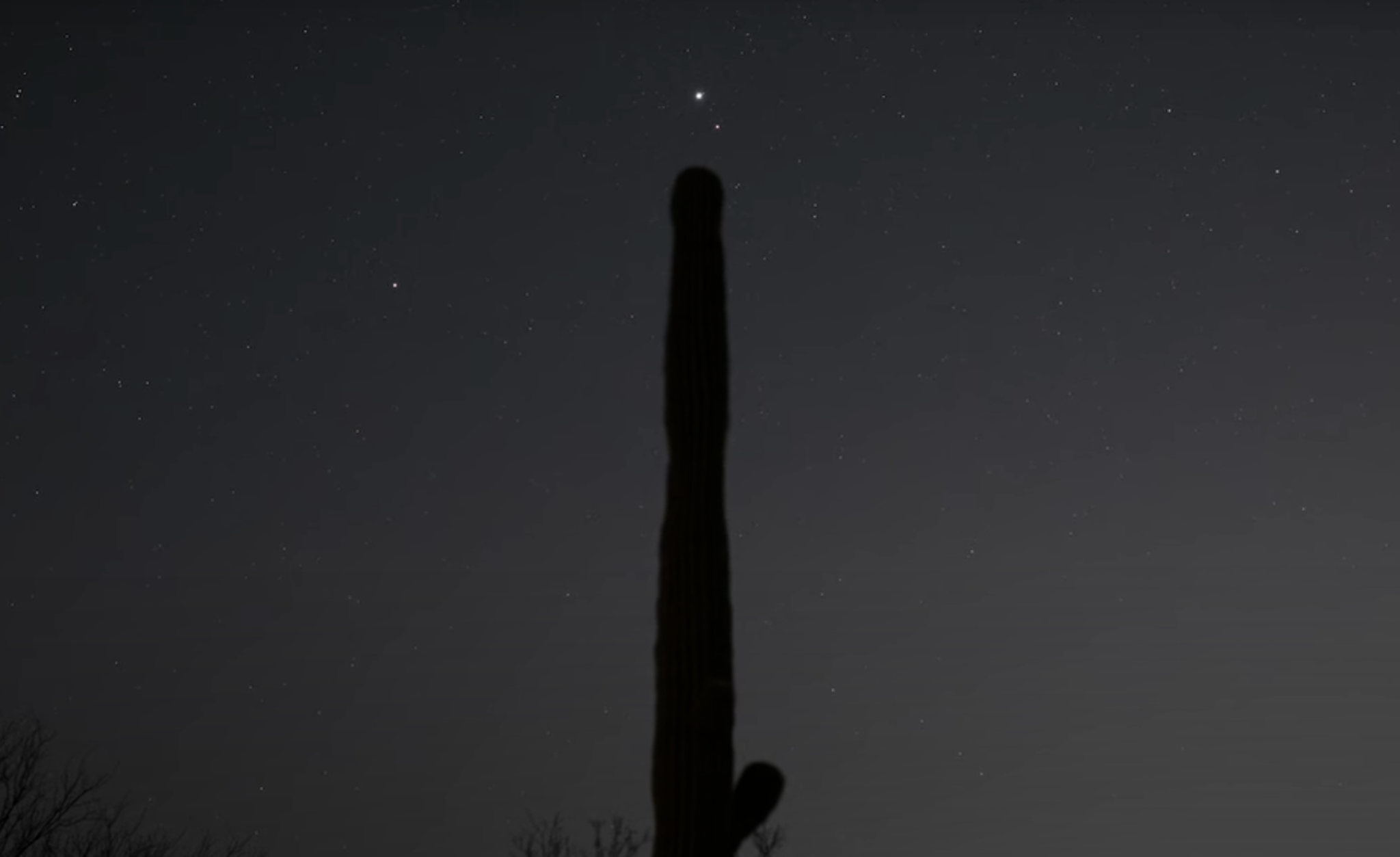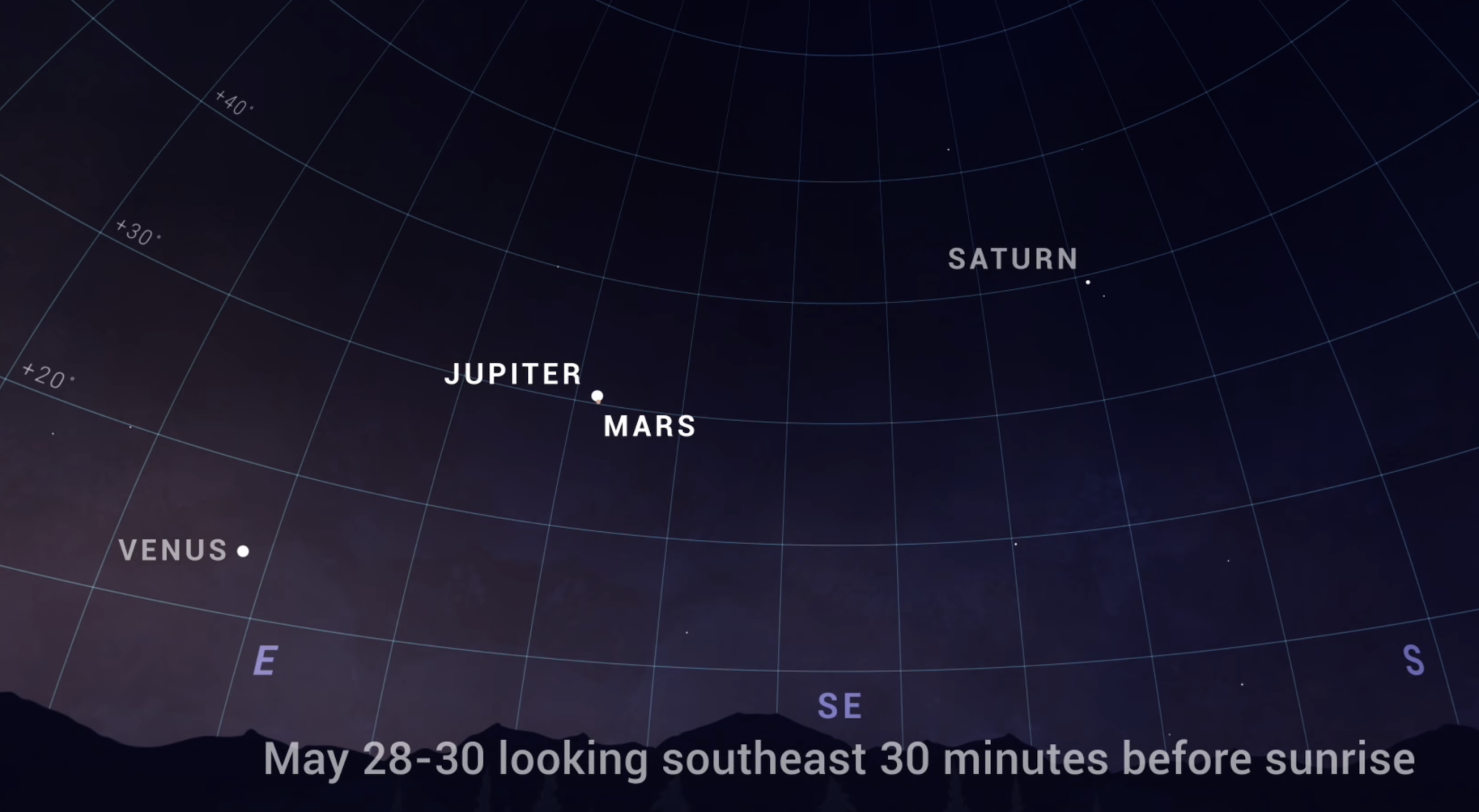Body
May ends with a couple of great planet-spotting opportunities. See the slender crescent Moon meet Venus. And watch Jupiter and Mars get increasing close, culminating in a conjunction where they’ll appear only a Moon’s-width apart.
Advertisement
Sky Watch May 2022
by Bob Berman, as featured in The Old Farmer’s Almanac.
Meteor Shower - May 4–5
While you’re observing the planets, look for shooting stars. The Eta Aquarids peak in the predawn hour of May 5. The comet responsible for the Eta Aquarids shower is Halley’s Comet! In the Northern Hemisphere, we expect 10 meteors per hour.
The best time to view is just before dawn on the mornings of May 4, 5 and 6 when Moon shine is not an issue. See more viewing tips for meteor showers.
Total Lunar Eclipse - May 15
A total lunar eclipse of May’s full Moon appears on Sunday night, May 15, with the entire eclipse visible from the eastern half of the U.S. and Canada and all of South America! West of the Mississippi, the Moon will rise already eclipsed, offering intriguing photography opportunities. Many folks in the media call this a “Blood Moon.”
The partial eclipse begins at 10:27 PM EDT on May 15, followed by totality beginning at 11:28 PM EDT. I’ll be writing more about this gorgeous total eclipse soon. See my new article with more details about the May 15 Total Lunar Eclipse.
When to See the Planets This Month
- Before dawn in the east on the 1st, Venus and Jupiter are still wonderfully close together.
- From the 3rd to the 20th, look for an easy planet lineup featuring, from left to right, Venus, Jupiter, Mars, and Saturn.
- The crescent Moon serves as an easy guide to all of the planets beginning on the 22nd, when it’s just below Saturn.
- The Moon will dangle below Jupiter and Mars on the 25th and below Venus on the 27th.
- From the 27th to the 30th, Jupiter and Mars get increasingly close in the predawn sky in the east. (Photos below, courtesy of NASA.)


Mars-Jupiter Conjunction
Sunday morning, May 29, brings the Mars-Jupiter Conjunction in the predawn sky. Look east above the horizon for Giant Jupiter. Orange-red Mars will be just to its right. The two planets are only 1/2-degree apart. If you have binoculars, you’ll better see the pairing (within a single field) and also Jupiter’s moons.
See the Almanac’s Bright Planets Calculator.














Comments